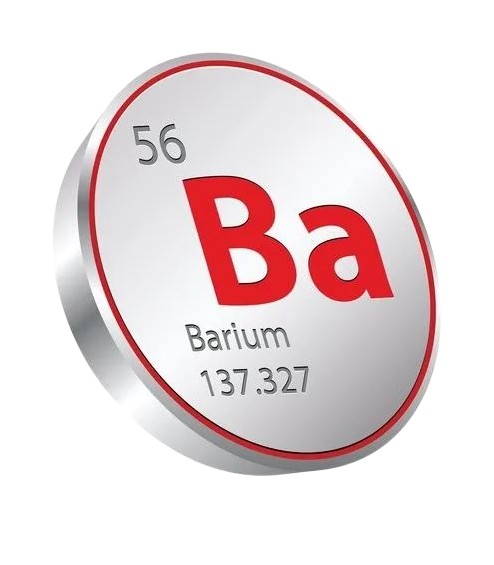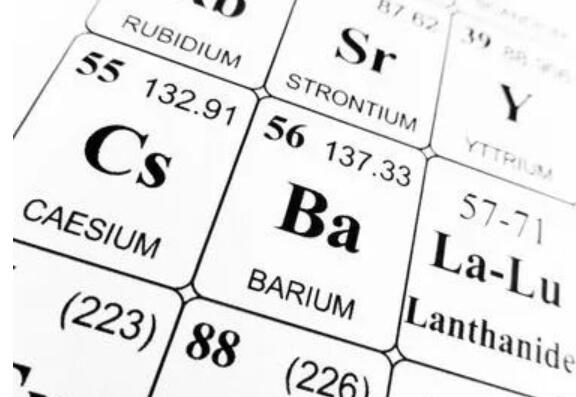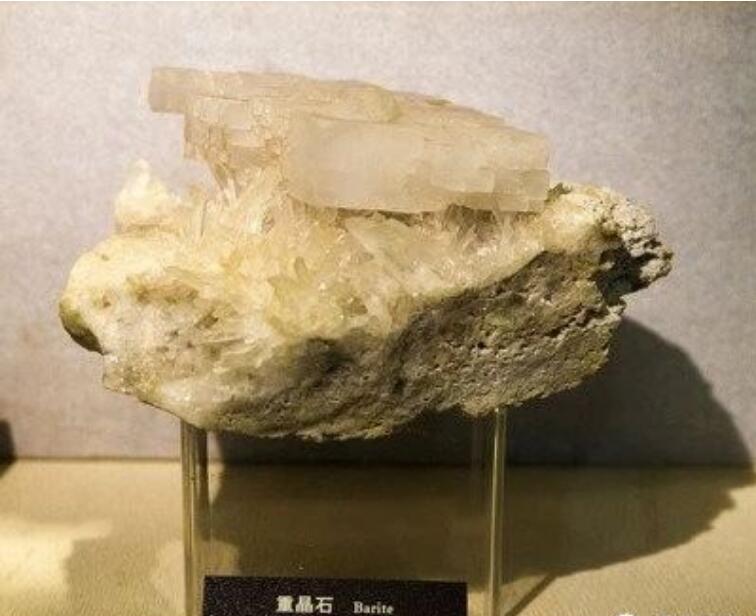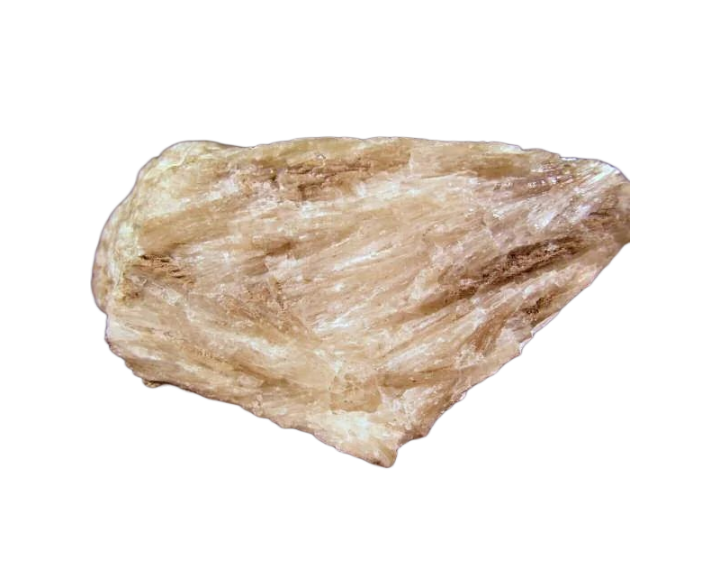arium, element 56 of the periodic table.

Barium hydroxide, barium chloride, barium sulfate… are very common reagents in high school textbooks. In 1602, western alchemists discovered the Bologna stone (also called “sunstone”) that can emit light. This kind of ore has small luminescent crystals, which will continuously emit light after being exposed to sunlight. These characteristics fascinated wizards and alchemists. In 1612, scientist Julio Cesare Lagara published the book “De Phenomenis in Orbe Lunae”, which recorded the reason for the luminescence of Bologna stone as derived from its main component, barite (BaSO4). However, in 2012, reports revealed that the true reason for Bologna stone’s luminescence came from barium sulfide doped with monovalent and divalent copper ions. In 1774, Swedish chemist Scheler discovered barium oxide and referred to it as “Baryta” (heavy earth), but the metal barium was never obtained. It was not until 1808 that British chemist David obtained a low purity metal from barite through electrolysis, which was barium. It was later named after the Greek word barys (heavy) and the elemental symbol Ba. The Chinese name “Ba” comes from the Kangxi Dictionary, meaning unmelted copper iron ore.
Barium metal is very active and easily reacts with air and water. It can be used to remove trace gases in vacuum tubes and picture tubes, as well as to make alloys, fireworks and nuclear reactors. In 1938, scientists discovered barium when they studied the products after bombarding uranium with slow neutrons, and speculated that barium should be one of the products of uranium nuclear fission. Despite numerous discoveries about metallic barium, people still use barium compounds more frequently.
The earliest compound used was barite – barium sulfate. We can find it in many different materials, such as white pigments in photo paper, paint, plastics, automotive coatings, concrete, radiation resistant cement, medical treatment, etc. Especially in the medical field, barium sulfate is the “barium meal” we eat during gastroscopy. Barium meal “- a white powder that is odorless and tasteless, insoluble in water and oil, and will not be absorbed by the gastrointestinal mucosa, nor will it be affected by stomach acid and other bodily fluids. Due to the large atomic coefficient of barium, it can generate photoelectric effect with X-ray, radiate characteristic X-ray, and form fog on the film after passing through human tissues. It can be used to improve the contrast of display, so that organs or tissues with and without contrast agent can display different black and white contrast on the film, so as to achieve the inspection effect, and truly show the pathological changes in human organ. Barium is not an essential element for humans, and insoluble barium sulfate is used in barium meal, so it will not have a significant impact on the human body.
But another common barium mineral, barium carbonate, is different. Just by its name, one can tell its harm. The key difference between it and barium sulfate is that it is soluble in water and acid, producing more barium ions, leading to hypokalemia. Acute barium salt poisoning is relatively rare, often caused by the accidental ingestion of soluble barium salts. The symptoms are similar to acute gastroenteritis, so it is recommended to go to the hospital for gastric lavage or take sodium sulfate or sodium thiosulfate for detoxification. Some plants have the function of absorbing and accumulating barium, such as green algae, which require barium to grow well; Brazil nuts also contain 1% barium, so it is important to consume them in moderation. Even so, witherite still plays an important role in chemical production. It is a component of glaze. When combined with other oxides, it can also show a unique color, which is used as an auxiliary material in ceramic coatings and optical glass.
The chemical endothermic reaction experiment is usually done with barium hydroxide: after mixing the solid barium hydroxide with ammonium salt, a strong endothermic reaction can occur. If a few drops of water are dropped on the bottom of the container, the ice formed by the water can be seen, and even the glass pieces can be frozen and stuck to the bottom of the container. Barium hydroxide has a strong alkalinity and is used as a catalyst for synthesizing phenolic resins. It can separate and precipitate sulfate ions and manufacture barium salts. In terms of analysis, the determination of carbon dioxide content in the air and the quantitative analysis of chlorophyll require the use of barium hydroxide. In the production of barium salts, people have invented a very interesting application: the restoration of murals after a flood in Florence in 1966 was completed by reacting it with gypsum (calcium sulfate) to produce barium sulfate.
Other barium containing compounds also exhibit remarkable properties, such as the photorefractive properties of barium titanate; The high-temperature superconductivity of YBa2Cu3O7, as well as the indispensable green color of barium salts in fireworks, have all become highlights of barium elements.
Post time: May-26-2023


